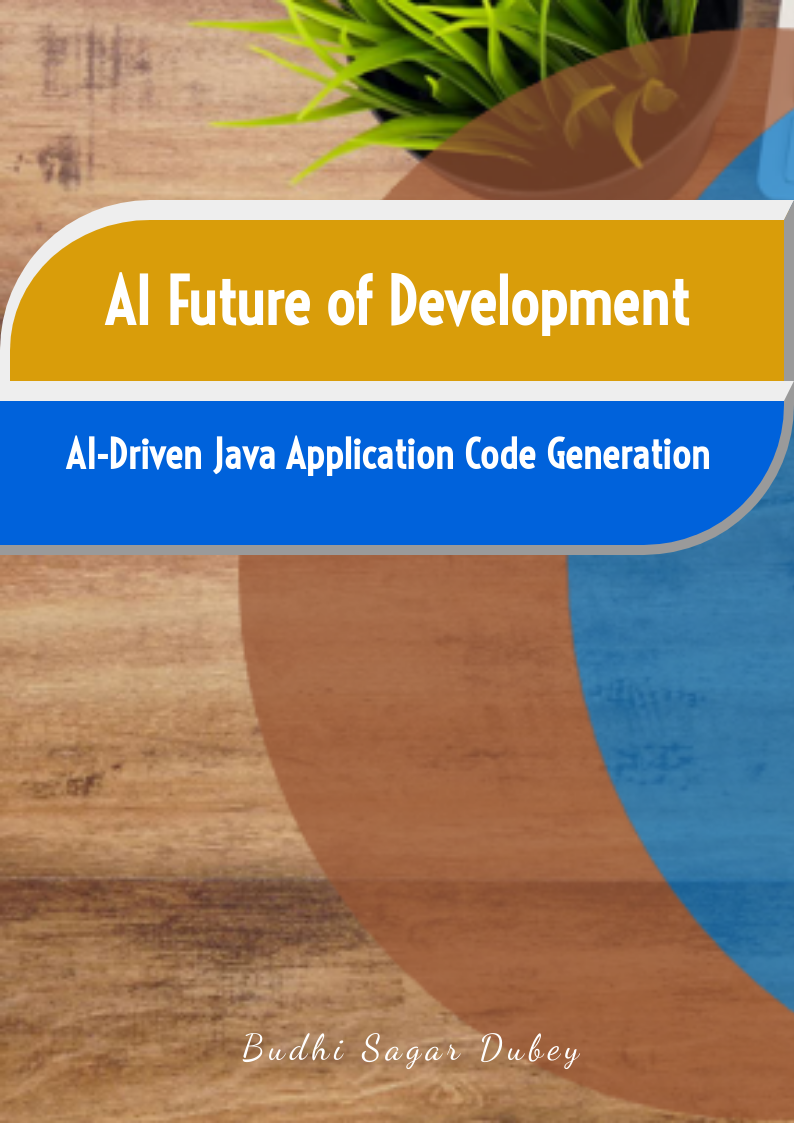AI Future of Development: AI-Driven Java Application Code Generation
AI-Driven Java Application Code Generation! This comprehensive blog explores the exciting world of artificial intelligence (AI) and machine learning (ML) in the context of Java application development. It aims to equip you with the knowledge and skills necessary to harness the power of AI for generating high-quality, efficient, and consistent Java code.
eBook :AI-Driven Code Generation
What is AI-Driven Code Generation?
AI-driven code generation uses artificial intelligence to automatically generate code for software applications. It involves machine learning algorithms, natural language processing, and other AI technologies to enhance the software development process.
Benefits
- Increased Productivity: Focus on higher-level tasks, leading to faster development times.
- Reduced Errors: Machines generate code, reducing human errors.
- Consistency: Ensures a uniform codebase by using the same generation algorithm.
- Cost Savings: Reduces development time and resources.
Use Cases
- Rapid Prototyping
- Code Refactoring
- Code Reuse
Overview of Artificial Intelligence in Software Development
Definition and History
AI-driven Java application code generation involves creating models that understand software specifications, design patterns, and best practices to generate code meeting specified requirements. The evolution of code generation tools from the 1970s to the present highlights the increasing integration of AI in software development.
Current Trends and Future Implications
- Increased Adoption: Growing use of AI tools in software development.
- Improved Accuracy and Efficiency: Enhanced tools for high-quality code generation.
- Low-Code/No-Code Solutions: Making development accessible to non-technical users.
- Integration with IDEs: Seamless use within development environments like Eclipse and IntelliJ.
Importance of AI in Java Application Development
Key Benefits
- Improved Productivity and Efficiency: Automates repetitive coding tasks.
- Better Quality and Consistency: Enforces coding standards and best practices.
- Reduced Errors and Bugs: Generates more stable and reliable applications.
- Future-Proofing Java Applications: Leverages the latest technologies and trends.
Java Basics
Java Syntax and Semantics
Understanding the syntax (structure) and semantics (meaning) of Java is crucial for writing correct and readable code. Java’s syntax includes rules for declaring variables, defining classes and methods, and using control flow statements.
Object-Oriented Programming (OOP) Principles
Java supports OOP principles such as encapsulation, abstraction, inheritance, and polymorphism, which are essential for creating complex and maintainable software systems.
Advanced Java Features
- Lambdas and Streams: Introduced in Java 8 for functional programming.
- Optional: Helps eliminate
NullPointerExceptions. - Java Collections Framework: Tools for managing collections of objects.
- Java Generics: Allows creating reusable code for different data types.
- Java Multithreading: Enables writing concurrent code for high-performance applications.
AI Tools and Techniques
Key AI Tools
- TensorFlow: Comprehensive ecosystem for building and deploying ML models.
- PyTorch: Known for its simplicity and dynamic computational graph.
- Scikit-Learn: Consistent interface for a wide range of ML algorithms.
AI in the Java Ecosystem
- Deeplearning4j: Deep learning library for the JVM, integrating with Hadoop and Spark.
- Weka: Machine learning library for data mining and predictive modeling.
Data Preparation and Feature Engineering
Data Preparation
Involves cleaning and transforming raw data to ensure its suitability for analysis. Tasks include handling missing values, outliers, and inconsistent data.
Feature Engineering
Creating new features from existing data to improve model performance. This step is critical for ensuring the effectiveness of AI-driven code generation.
Data Collection and Cleaning
Data Collection
Data collection is the process of gathering and measuring information on variables of interest in an established systematic fashion. In the context of AI-driven Java application code generation, data collection involves gathering data that will be used to train the AI model.
Data Cleaning
Data cleaning is the process of preparing data for analysis by removing or correcting errors, inconsistencies, and inaccuracies. This ensures that the AI model is accurate and reliable.
Feature Selection and Transformation
Feature Selection
Feature selection is the process of choosing a subset of relevant features for use in model construction. It aims to improve the performance of the model by reducing overfitting and increasing its generalization capabilities.
Feature Transformation
Feature transformation involves converting the selected features into a format that is suitable for model training and prediction. This may include processes such as normalization, standardization, and encoding.
Generative Models for Code Generation
Understanding Generative Models
Generative models are a type of machine learning algorithm that learns to generate new data similar to a given training set. In the context of code generation, these models are trained on large repositories of existing code to learn patterns, structures, and conventions commonly used in software development.
Benefits of Generative Models for Code Generation
- Accelerated Development: Speeds up the coding process by automating routine tasks.
- Consistency: Ensures consistent coding standards across projects.
- Error Reduction: Minimizes human errors in code.
Popular AI Frameworks and Libraries
TensorFlow
An end-to-end open-source platform used for machine learning and deep learning tasks. It supports a wide array of neural network architectures and provides functionalities for defining, training, and deploying ML models.
PyTorch
An open-source machine learning library known for its simplicity and flexibility. PyTorch offers a dynamic computational graph and strong community support.
Scikit-Learn
A machine learning library for Python built on NumPy, SciPy, and Matplotlib. It offers tools for predictive data analysis and supports a wide range of ML algorithms.
Deeplearning4j
A deep learning library for the JVM designed for business environments. It supports distributed computing and integrates with Hadoop and Spark.
Weka
A machine learning library written in Java, used for data mining, predictive modeling, and analytics. It includes tools for pre-processing data and a wide range of algorithms.
Conclusion
AI-driven Java application code generation is transforming the future of software development. By leveraging AI and machine learning, developers can enhance productivity, improve code quality, and reduce errors. This course will provide you with the necessary knowledge and skills to harness the power of AI for Java application development, helping you stay ahead in the ever-evolving world of software development. Let’s unlock the potential of AI in Java application development together!

